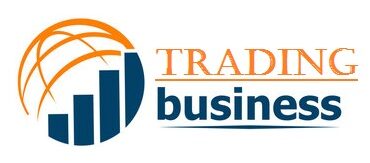According to an Ernst & Young report, many organisations may have passed up chances to improve their company and according to Derek Bradfield, a Deloitte audit partner who is also co-leading its revenue recognition consultancy effort, many businesses are using “ad hoc” solutions like manual Excel spreadsheets for the first year with the intention of “adopting again next year to get it right.”
Spreadsheets are a fantastic, simple-to-use, cost-free, and widely available tool in theory. But in practice, a “brute force” spreadsheet-based accounting method is ineffective. Most revenue managers don’t have enough time to devote to the laborious task of tracking revenue in Excel or Google Sheets when dealing with complicated revenue recognition scenarios. The complexity of this kind of “brute force” strategy must be understood by organisations. The finance and accounting departments shouldn’t rely on Excel spreadsheets for the five essential reasons listed below:
1. Excel is prone to mistakes
Because spreadsheets frequently involve human contact, there is a significant likelihood that accounting mistakes will be discovered. 88% of spreadsheets have errors, according to a recent story on MarketWatch.com. Furthermore, spreadsheets become more laborious and time-consuming as revenue complexity increases. When revenue data includes complicated scenarios like contract revisions and large finance components, reviewing calculations and producing analytical reports can become extremely time-consuming. The month-end deliverables expand beyond a simple “sanity check” between accounting departments to confirm accuracy and guarantee proper accounting treatment. In the end, accounting errors in financial statements may result in incorrect revenue recognition, lost income, subpar company decisions, or even financial failure.
2. Excel’s security flaws
Financial and accounting departments that use Excel spreadsheets to manage data face very high security threats as well. Spreadsheets lack transparency into tracking transaction changes and are static resources. Excel is unable to offer a thorough history of modifications made to a range of several transactions, let alone individual transactions, which makes auditing a company’s income in a spreadsheet a challenging and time-consuming operation. Even worse, the majority of organisations don’t password-protect their spreadsheets, leaving companies even more open to security flaws (and errors; please see number 1).
On the other hand, users can rely on the data generated and trace changes made inside the system with automatic revenue recognition software solutions because they have set security controls in place, give audit trails, and both. Individual logins and permission procedures, two relatively easy adjustments, greatly improve security protocols while preserving the integrity of private income data. The time worth of money, allocations, and multi-currency foreign exchange conversions are just a few of the extremely particular accounting operations that revenue recognition software may break down by customer, order, or product group levels for an easily auditable data history.
3. Sharing is not designed for Excel
In terms of revenue management, spreadsheets weren’t really made for it. Working together with senior members of their team, revenue managers spend a lot of time making sure the business properly complies with the new revenue recognition standard. A staff accountant may work with the Senior Manager of Technical Revenue Accounting, the Manager of Revenue Accounting, the Manager of Revenue Assurance, the General Ledger accounting team, members of the Billing Operations team, etc. to complete the month-end close process in enterprise level businesses. Revenue reporting should involve a variety of people and systems working together, but Excel doesn’t support simultaneous editing by many users without a Microsoft Cloud subscription, and the audit log is also challenging to understand without a lot of effort. When many offices or departments at an enterprise-level company use the same spreadsheet, version control may also be a guessing game. This is especially true when the alternative is to save these enormous files on a shared workspace, which is something we have all come to detest.
4. Excel is not agile
Revenue information in spreadsheet-based systems becomes more dispersed as your business develops and expands. Limits are eventually encountered because of scalability for a growing organisation. Excel is not the best option for large organisations with numerous entities, different currencies, and enormous transaction volumes. Over time, the seemingly endless amount of worksheet tabs starts to annoy. A cloud-based solution will scale appropriately as a firm expands and customer demand for its products rises.
5. Excel isn’t a reporting tool
An Excel report offers how much flexibility? Is your revenue data shown in a way that is both simple to understand and intuitive? Pivot tables and charts are attractive, but is there a better way? Automated revenue recognition software solutions include analytics tools with customised reports created by you, as well as fully operational dashboards with point-and-click configurations tailored to your particularity with drill down to the most granular level of your data.
Automation as a Clever Replacement for Spreadsheet-Based Accounting
Have you already wished that a spreadsheet might be replaced? Spreadsheets should only be used as a last resort for implementing income report recognition. PWC concurs, citing the following quote: “Because a manual approach can involve a higher risk of human mistake and resource requirements, it shouldn’t be considered a replacement for a sustainable long-term solution, but rather an interim strategy or a crucial supplement to it. Businesses should take into account a structure that will enable them to move toward a more long-term, automated solution even as they employ a somewhat manual approach.
Here at Itas Solutions, we have a variety of ways in which we can help you move away from spreadsheets to a cloud based solutions with ourSage solutions and our flagship Sage Intacct.
One of our team of Sage specialists can help you choose the best solution that suits your business for accounting a reporting and they are all MTD compliant.
Who we are
Itas is a multi-award-winning Sage partner. Having started in 1995 with just one customer, we now support over 200 clients nationwide. They know we are always there to provide a helping hand, whenever they need us. Trusted by our customers for over 20 years, Itas has been built on referrals from customers and IT professionals that love the expert yet personal service that we offer.
If you would like to know more about how Itas can help your business with finance automation, Sage implementation and improve purchasing control, you can get in touch at info@itassolutions.co.uk, call us on +44 (0) 1824 780 000 or contact us via our website.

